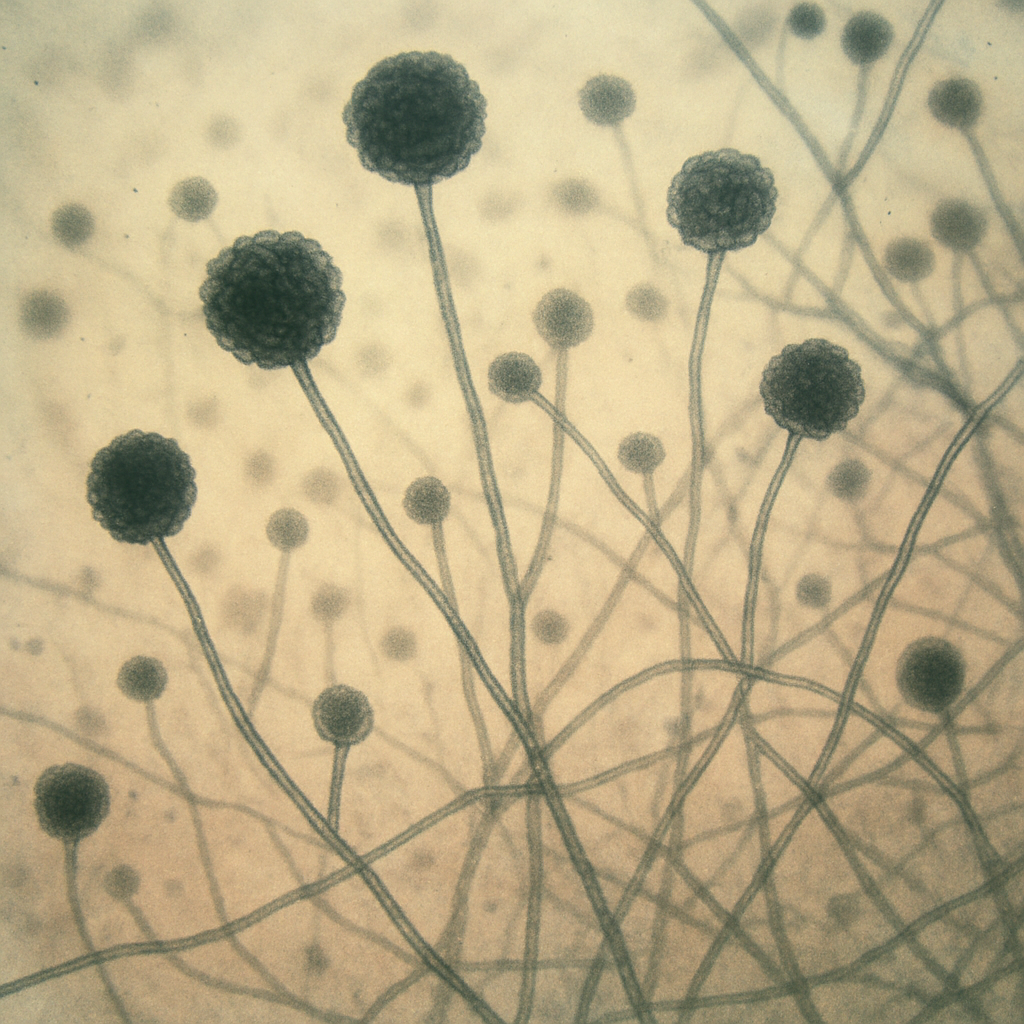When it comes to treating fungal infections, Fluconazole is often a go-to medication. However, not everyone can use it due to allergies, side effects, or ineffectiveness against certain strains. This has led to the exploration of various alternatives to Fluconazole, including other antifungal medications and natural antifungals. In this article, we’ll dive into the comparative effectiveness of these options, providing a comprehensive guide to help you choose the right treatment.

Fungal infections are caused by fungi that can affect different parts of the body. They can range from mild skin infections like athlete’s foot to more severe systemic infections that affect internal organs. Common symptoms include itching, redness, and discomfort. While these infections are usually not life-threatening, they can cause significant discomfort and require effective treatment to clear up.
Types of Fungal Infections
Fungal infections can be classified based on the area they affect. Superficial infections occur on the skin, hair, and nails, commonly presenting as ringworm or athlete’s foot. Subcutaneous infections penetrate deeper into the skin layers, often resulting from traumatic implantation of fungi. Systemic infections are the most severe, affecting internal organs and are typically seen in immunocompromised individuals. Recognizing the type of infection is crucial for determining the appropriate treatment.
Causes and Risk Factors
Fungal infections thrive in warm, moist environments, making certain body parts more susceptible. Factors such as a weakened immune system, poor hygiene, and prolonged antibiotic use can increase the risk of fungal infections. Understanding these risk factors helps in adopting preventive measures and identifying individuals who might need more vigilant monitoring for infections.
Diagnosis and Symptoms
Diagnosing a fungal infection often involves a combination of clinical evaluation and laboratory tests. Symptoms can vary widely depending on the infection type but often include redness, itching, and scaling for skin infections. For systemic infections, symptoms might be more severe, including fever and organ-specific issues. Early diagnosis is critical to prevent complications and initiate appropriate treatment.
Why Consider Alternatives to Fluconazole?
Fluconazole is a widely used antifungal medication that works by inhibiting the growth of fungi. It’s effective against a variety of fungal infections, but it’s not always suitable for everyone. Some people experience side effects such as nausea, headache, or liver damage. Additionally, certain fungi have developed resistance to Fluconazole, making it less effective. This is where alternatives come into play.
Limitations of Fluconazole
Although Fluconazole is a potent antifungal, its limitations cannot be overlooked. It is primarily effective against Candida species but may be less effective against molds and dermatophytes. Furthermore, prolonged use can lead to resistance, limiting its efficacy. Understanding these limitations is crucial for healthcare providers when prescribing treatments.
Side Effects and Contraindications
The side effects associated with Fluconazole can range from mild to severe. Common side effects include nausea and headache, while serious ones like liver toxicity and severe allergic reactions can occur. Individuals with pre-existing liver conditions or those on specific medications may need to avoid Fluconazole. Awareness of these side effects and contraindications is vital for patient safety.
Resistance Issues
Fungal resistance to Fluconazole is an emerging problem, particularly in immunocompromised patients. Resistance can result from genetic mutations in fungi, rendering the drug ineffective. This growing concern underscores the need for alternative treatments and vigilant monitoring of treatment efficacy in patients using Fluconazole.
Other Antifungal Medications
Itraconazole
Itraconazole is another azole antifungal similar to Fluconazole. It’s often used for infections that Fluconazole can’t treat effectively. Itraconazole works by disrupting the cell membrane of the fungus, causing it to die. It’s commonly prescribed for nail infections, aspergillosis, and histoplasmosis.
Mechanism of Action
Itraconazole functions by inhibiting the enzyme lanosterol 14α-demethylase, crucial for fungal cell membrane synthesis. This disruption leads to increased membrane permeability and ultimately fungal cell death. Its mechanism makes it effective against a broader range of fungi compared to Fluconazole.
Indications and Uses
Itraconazole is versatile, treating infections like aspergillosis, sporotrichosis, and onychomycosis. Its broad spectrum makes it particularly useful in cases where initial treatments fail. Understanding when to use Itraconazole can optimize treatment outcomes for resistant or severe infections.
Potential Interactions and Side Effects
Itraconazole can interact with several medications, affecting their metabolism and efficacy. Common side effects include gastrointestinal disturbances and elevated liver enzymes. Monitoring for interactions and side effects is essential, especially in patients taking multiple medications.
Terbinafine

Terbinafine is an allylamine antifungal used to treat fungal infections of the skin and nails. It works by inhibiting the enzyme that fungi need to build their cell membranes. Terbinafine is particularly effective against dermatophytes, which cause athlete’s foot, jock itch, and ringworm.
How Terbinafine Works
Terbinafine acts by inhibiting the enzyme squalene epoxidase, crucial for ergosterol synthesis in fungi. This inhibition leads to toxic squalene accumulation and cell death. Its mechanism makes it highly effective against dermatophytes, which are common skin and nail pathogens.
Clinical Applications
Terbinafine is widely used for treating dermatophyte infections, particularly onychomycosis and tinea infections. Its effectiveness and short treatment duration make it a preferred choice for many superficial fungal infections. Proper application and adherence to treatment can enhance its efficacy.
Side Effects and Considerations
While effective, Terbinafine can cause side effects such as gastrointestinal disturbances and taste changes. It is contraindicated in individuals with liver disease due to potential hepatotoxicity. Monitoring liver function during treatment is recommended to prevent complications.
Amphotericin B
Amphotericin B is a polyene antifungal used for severe systemic infections. It’s typically reserved for cases where other antifungals are ineffective. This medication works by binding to fungal cell membranes, causing them to leak and eventually die.
Mechanism and Spectrum
Amphotericin B binds to ergosterol in fungal cell membranes, creating pores that lead to cell leakage and death. Its broad-spectrum activity covers many fungi, including resistant strains. This makes it invaluable in treating life-threatening systemic infections.
Usage in Severe Infections
Reserved for severe infections, Amphotericin B treats conditions like cryptococcal meningitis and invasive aspergillosis. Its use is critical in immunocompromised patients where other treatments fail. Understanding its role in managing severe infections can guide appropriate therapy decisions.
Adverse Effects and Management
Amphotericin B is notorious for side effects, particularly nephrotoxicity and infusion-related reactions. Pre-medication and careful monitoring of kidney function can mitigate some adverse effects. Weighing benefits against risks is crucial when considering Amphotericin B for treatment.
Natural Antifungals
For those seeking alternatives outside of pharmaceuticals, natural antifungals can offer a viable option. These remedies often have fewer side effects and can be used alongside traditional treatments.
Tea Tree Oil
Tea tree oil is a popular natural antifungal known for its ability to treat skin infections. It contains compounds that can kill fungi and bacteria, making it a versatile treatment option.
Composition and Properties
Tea tree oil is derived from the leaves of Melaleuca alternifolia and contains terpenes like terpinen-4-ol, which possess antifungal and antibacterial properties. Its natural origin and effectiveness against skin pathogens make it a popular choice for topical infections.
Application and Effectiveness
Applied topically, tea tree oil can treat conditions like athlete’s foot and ringworm. Its rapid action against fungi makes it suitable for mild infections. However, consistency in application is key to achieving desired results.
Safety and Precautions
Though generally safe, tea tree oil can cause skin irritation or allergic reactions in some individuals. It’s important to perform a patch test before widespread use. Dilution with carrier oils can minimize potential irritation, enhancing safety.
Garlic
Garlic has been used for centuries as a natural remedy for various ailments, including fungal infections. It contains allicin, a compound with antifungal and antibacterial properties.
Historical Use and Benefits
Garlic’s medicinal use dates back to ancient civilizations, valued for its broad-spectrum antimicrobial properties. Allicin, formed when garlic is crushed, is the key compound responsible for its antifungal activity. Its use in traditional medicine underscores its potential benefits in modern treatments.
Methods of Use
Garlic can be consumed raw, cooked, or applied topically to treat fungal infections. Its versatility allows for integration into dietary and topical regimens. However, the method of application may influence its effectiveness and user experience.
Limitations and Considerations
While beneficial, garlic is less effective against severe infections and may cause skin irritation or odor. Its use is best suited for mild infections or as a complementary therapy. Understanding these limitations is essential for setting realistic treatment expectations.
Coconut Oil

by Jacques Baptiste (https://unsplash.com/@thedevonbushman)
Coconut oil is another natural antifungal that can be used to treat mild skin infections. It contains lauric acid, which has been shown to inhibit the growth of certain fungi.
Composition and Mechanism
Coconut oil is rich in medium-chain fatty acids like lauric acid, which exhibit antimicrobial properties. These components disrupt fungal cell membranes, leading to cell death. Its moisturizing properties also aid in skin health, making it an appealing option for topical use.
Application and Benefits
Applied directly to affected areas, coconut oil can help treat mild fungal infections. Its emollient properties soothe irritated skin, providing dual benefits of treatment and relief. Regular application can enhance its effectiveness in managing symptoms.
Limitations and Usage Tips
While coconut oil is safe for most people, its antifungal potency is limited compared to pharmaceuticals. It’s best used for mild infections or as an adjunct to other treatments. Combining coconut oil with other natural antifungals may improve outcomes.
Choosing the Right Treatment
When considering alternatives to Fluconazole, it’s important to assess the type and severity of the infection, as well as any personal health concerns. For mild infections, natural remedies may be sufficient, while more severe cases might require prescription medications. Consulting with a healthcare provider is crucial to ensure the chosen treatment is safe and effective.
Assessing Infection Severity
Evaluating the severity of a fungal infection is the first step in choosing the appropriate treatment. Mild infections might resolve with topical treatments or natural remedies, while systemic or resistant infections necessitate more aggressive therapies. Understanding the extent of the infection guides effective treatment decisions.
Considering Health Conditions
Individual health conditions play a significant role in treatment selection. Conditions like liver disease or medication interactions can limit the use of certain antifungals. Personalizing treatment based on health status ensures safety and enhances therapeutic success.
Importance of Professional Guidance
Consulting with healthcare professionals provides valuable insights into treatment options and potential risks. They can offer tailored recommendations based on the latest clinical guidelines and patient-specific factors. Professional guidance is essential for optimizing treatment outcomes and minimizing adverse effects.
Conclusion
While Fluconazole is a powerful antifungal medication, it’s not the only option available. From other pharmaceuticals like Itraconazole and Terbinafine to natural remedies like tea tree oil and coconut oil, there are several alternatives to consider. By understanding the comparative effectiveness of these options, you can make an informed decision about the best treatment for your fungal infection. Always consult a healthcare professional before starting any new treatment to ensure it’s appropriate for your specific needs.
Summary of Alternatives
The availability of various antifungal alternatives provides flexibility in addressing diverse fungal infections. Each option has unique benefits and limitations, catering to different patient needs. A comprehensive understanding of these alternatives empowers patients and healthcare providers to make informed treatment choices.
Making Informed Decisions
Informed decision-making involves weighing the pros and cons of each treatment option in the context of individual circumstances. Patients should consider factors like infection type, health conditions, and personal preferences. Collaborating with healthcare providers ensures that decisions are based on sound medical advice and current evidence.
Future Directions in Antifungal Therapy
The landscape of antifungal therapy continues to evolve with ongoing research and development. New treatments and resistance management strategies are on the horizon, promising enhanced efficacy and safety. Staying informed about these advancements can benefit patients and practitioners in managing fungal infections effectively.


